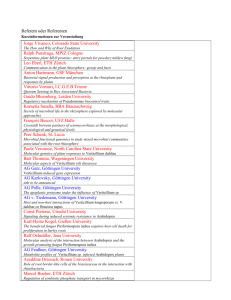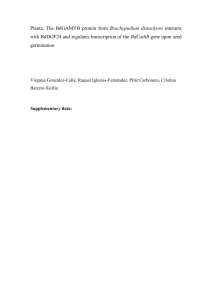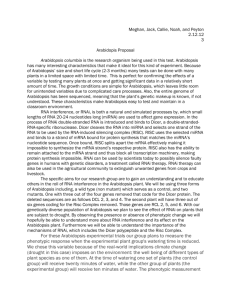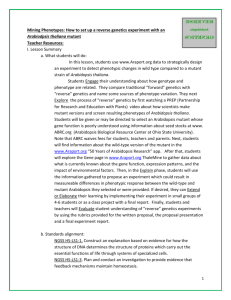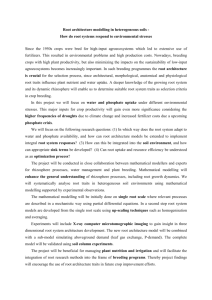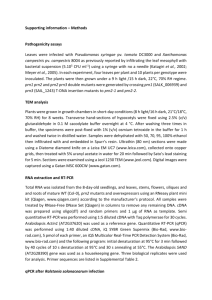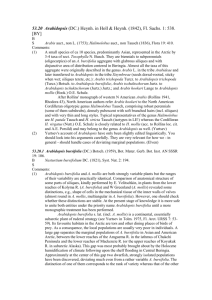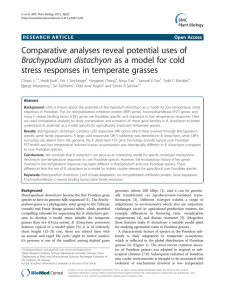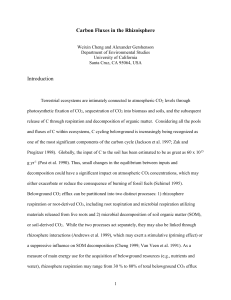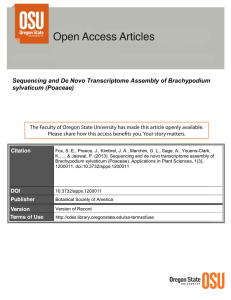PLANT ELONGATOR REGULATES AUXIN RESPONSE
advertisement
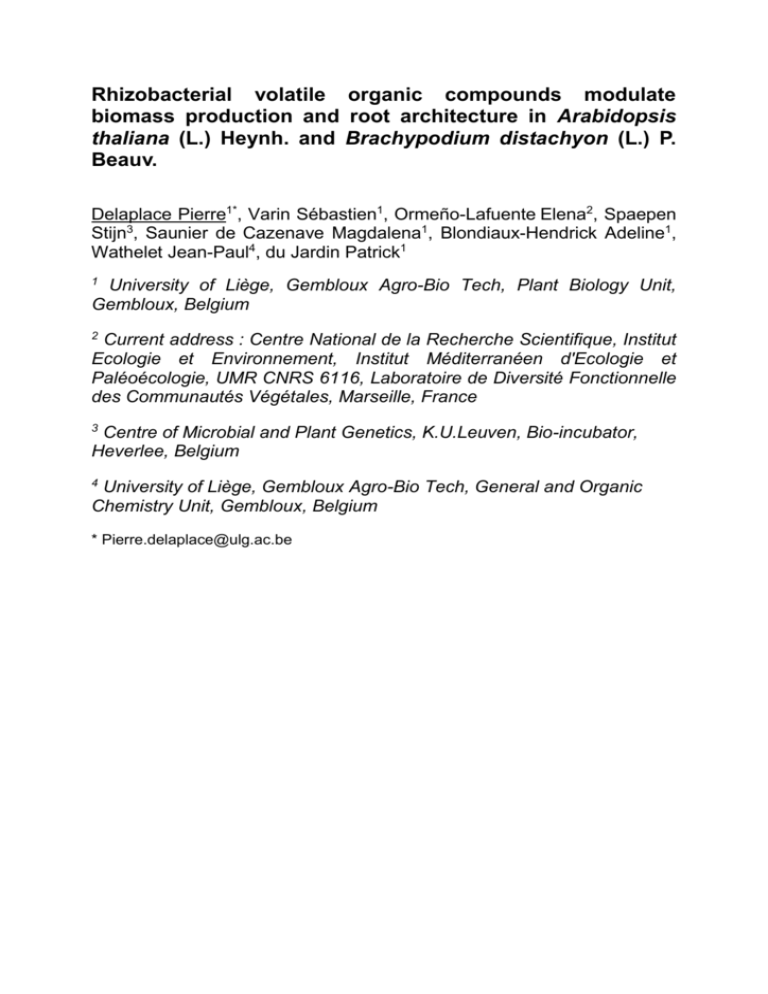
Rhizobacterial volatile organic compounds modulate biomass production and root architecture in Arabidopsis thaliana (L.) Heynh. and Brachypodium distachyon (L.) P. Beauv. Delaplace Pierre1*, Varin Sébastien1, Ormeño-Lafuente Elena2, Spaepen Stijn3, Saunier de Cazenave Magdalena1, Blondiaux-Hendrick Adeline1, Wathelet Jean-Paul4, du Jardin Patrick1 1 University of Liège, Gembloux Agro-Bio Tech, Plant Biology Unit, Gembloux, Belgium 2 Current address : Centre National de la Recherche Scientifique, Institut Ecologie et Environnement, Institut Méditerranéen d'Ecologie et Paléoécologie, UMR CNRS 6116, Laboratoire de Diversité Fonctionnelle des Communautés Végétales, Marseille, France 3 Centre of Microbial and Plant Genetics, K.U.Leuven, Bio-incubator, Heverlee, Belgium 4 University of Liège, Gembloux Agro-Bio Tech, General and Organic Chemistry Unit, Gembloux, Belgium * Pierre.delaplace@ulg.ac.be The ability of plants to take up water and mineral nutrients from the soil depends on their capacity to develop an extensive root system and on the interactions of roots with their soil environment, the rhizosphere. Studies of the mechanisms involved in the communication between plant growth-promoting soil micro-organisms and the root system is expected to lead to improved fertility management strategies. Up to now, the characterization of such interactions has been mainly focused on liquid diffusates but it has been recently reported that volatile organic compounds (VOC) also play a role as chemical messengers in positive interactions occurring in the rhizosphere and involving plants, bacteria, fungi and insects [1-2]. In this context, this project aims to better understand the ecophysiology of the rhizosphere of Arabidopsis thaliana and Brachypodium distachyon. For this purpose, a collection of 18 rhizobacterial strains belonging to nine genera were selected for their potential growth promotion ability. The VOC-emission capacity of each strain was measured after 24 and 48 hours of growth on agar media [3] using solid-phase microextraction followed by gas chromatography coupled to a mass spectrometer. In parallel, an in vitro screening system was set up to assess VOCmediated plant-growth promotion ability of the selected strains. This system separates physically the plant and the bacteria while allowing interactions through VOC for 10 days within a shared atmosphere. For Arabidopsis, two inoculum sizes were considered: 2*105 and 2*106 cfu, using biological triplicates. At the end of the process, leaf and root biomasses, leaf area, primary root length, lateral root number and lateral root length were measured to assess the effects of bacterial VOC on plant growth. Experiments are in progress to characterize such parameters on Brachypodium in order to compare the response of both model species to rhizobacterial volatile perception. 1. Ryu CM, Farag MA, Hu CH, Reddy MS, Wei HX, Paré PW, Kloepper JW (2003) Bacterial volatiles promote growth in Arabidopsis. Proc Natl Acad Sci USA 8: 49274932. 2. Kai M, Effmert U, Berg G, Piechulla B (2007) Volatiles of bacterial antagonists inhibit mycelial growth of the plant pathogen Rhizoctonia solani. Arch Microbiol 187: 351-360. 3. Farag MA, Ryu CM, Sumner LW, Paré PW (2006) GC–MS SPME profiling of rhizobacterial volatiles reveals prospective inducers of growth promotion and induced systemic resistance in plants. Phytochemistry 67: 2262-2268. Keywords: root architecture, plant growth-promoting rhizobacteria, volatile organic compounds, rhizosphere Acknowledgements: this work was supported by the Belgian Fonds de la Recherche Scientifique (FRFC project 2.4.591.10. and postdoctoral grant 1808458).

